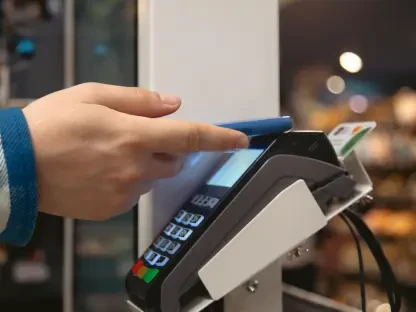In an era where global demand for luxury goods soars to unprecedented heights, a staggering statistic reveals that the luxury e-commerce market is projected to surpass $100 billion by 2027, highlighting the immense potential for growth. Amidst this rapid expansion, challenges such as counterfeit products, logistical bottlenecks, and trust issues loom large, threatening to dampen consumer confidence. Enter LavishLocs, a pioneering platform that is transforming the landscape of cross-border luxury shopping through an innovative dropshipping model. By tackling these persistent hurdles with cutting-edge technology and strategic partnerships, this trailblazer is not only redefining accessibility for merchants but also elevating the high-end shopping experience for consumers worldwide. This report explores how LavishLocs is setting new benchmarks in an industry ripe for disruption.
The Landscape of Luxury E-Commerce Today
The luxury e-commerce sector stands as a powerhouse in global trade, experiencing exponential growth driven by rising disposable incomes and digital adoption. Spanning diverse categories such as fashion, jewelry, watches, cosmetics, and premium home goods, this market caters to an increasingly discerning clientele seeking exclusivity online. With cross-border transactions gaining momentum, regions like North America, Europe, and Asia have emerged as key hubs, fueled by a growing appetite for international brands and seamless shopping platforms.
Major players, including established luxury houses and digital marketplaces, dominate the space, leveraging advanced technologies like artificial intelligence and big data to personalize offerings and predict trends. These tools have become indispensable in understanding consumer behavior and optimizing supply chains in real time. However, the integration of such innovations also brings complexities, particularly in maintaining brand integrity across digital channels amidst rising competition.
Regulatory frameworks add another layer of intricacy to this dynamic industry. International trade laws, consumer protection standards, and tariffs specific to luxury goods often vary by region, posing challenges for cross-border operations. As the sector continues to evolve, balancing technological advancements with compliance remains a critical focus for stakeholders aiming to sustain growth and trust in this lucrative arena.
LavishLocs’ Game-Changing Dropshipping Model
Innovation in Business Operations
LavishLocs has carved a unique niche in luxury e-commerce by introducing a dropshipping model that eliminates traditional burdens like inventory costs and warehousing for merchants. This approach allows sellers to list high-end products without physically stocking them, as LavishLocs manages sourcing and fulfillment directly with suppliers. Such a framework significantly reduces financial risks, making the luxury market accessible to a broader range of participants.
This model particularly benefits small businesses and individual entrepreneurs who previously faced high barriers to entry in a sector dominated by big players. By leveling the playing field, LavishLocs empowers these smaller entities to compete, offering them tools to market premium goods without the overhead of traditional retail. This democratization fosters innovation and diversity in product offerings, enriching the overall marketplace.
Emerging trends further complement this shift, with low-risk business structures gaining traction alongside a demand for personalized consumer experiences. LavishLocs taps into these movements by integrating data-driven insights to tailor interactions, ensuring that both merchants and buyers benefit from a more customized and efficient ecosystem. This forward-thinking strategy signals a departure from conventional e-commerce norms, prioritizing agility and adaptability.
Market Impact and Growth Potential
Data indicates a rising adoption of dropshipping within luxury e-commerce, with platforms like LavishLocs leading the charge in redefining operational standards. Industry reports suggest that this model accounts for a growing share of online luxury sales, driven by its cost-effectiveness and scalability. LavishLocs, in particular, has positioned itself as a catalyst for this transformation, attracting a diverse merchant base eager to capitalize on global demand.
Looking at growth projections, cross-border luxury trade is expected to see robust expansion, especially in high-demand regions such as North America, Europe, and Asia. From 2025 to 2027, market analysts anticipate a compound annual growth rate exceeding 10% in these areas, fueled by increasing digital penetration and consumer preference for international brands. LavishLocs is well-poised to harness this potential, leveraging its streamlined operations to penetrate untapped markets.
The scalability of this dropshipping framework offers a blueprint for global influence, potentially reshaping industry standards. As more merchants adopt this low-barrier approach, the ripple effects could redefine how luxury goods are marketed and sold online. LavishLocs stands at the forefront of this evolution, with its model serving as a benchmark for efficiency and accessibility in a competitive landscape.
Overcoming Challenges in Luxury Cross-Border Trade
Logistical inefficiencies often plague cross-border luxury trade, with delays and high shipping costs disrupting the customer experience. Additionally, concerns over product authenticity and the complexity of after-sales services, such as returns or repairs, pose significant hurdles for both merchants and consumers. These issues are amplified in a market where expectations for speed and quality are exceptionally high.
LavishLocs tackles these obstacles head-on through strategic alliances with global logistics providers, ensuring swift and secure delivery across borders. By building an advanced network, the platform minimizes transit times and enhances tracking transparency, addressing a critical pain point for international buyers. Furthermore, robust customer support systems are in place to handle post-purchase needs, maintaining the premium service level expected in luxury shopping.
To combat risks like counterfeit goods, LavishLocs employs stringent vetting processes for merchants and partners directly with trusted suppliers. Innovative solutions, such as blockchain-based authentication for high-value items, are also being explored to further safeguard transactions. These proactive measures not only mitigate operational challenges but also set a precedent for reliability in the global luxury e-commerce space.
Ensuring Trust and Compliance in a Global Market
Navigating the regulatory landscape of luxury e-commerce requires meticulous attention to international trade laws and consumer protection standards. Variations in tariffs, import duties, and intellectual property regulations across countries create a complex environment for platforms operating on a global scale. Non-compliance can result in legal repercussions and damage to brand reputation, making adherence a top priority.
LavishLocs demonstrates a strong commitment to authenticity and trust by implementing real-name merchant verification and forging partnerships with renowned luxury brands. This rigorous approach ensures that only genuine products reach consumers, reinforcing confidence in every transaction. Such measures also align with industry demands for transparency, setting a high standard for competitors to follow.
Beyond authenticity, the platform prioritizes compliance through robust security protocols and adherence to regional guidelines. By investing in data protection and transparent business practices, LavishLocs builds a foundation of trust that resonates with both merchants and buyers. These efforts not only safeguard operations but also contribute to shaping best practices in a sector where credibility is paramount.
The Future of Luxury E-Commerce with LavishLocs
Emerging technologies like artificial intelligence and big data analytics are central to LavishLocs’ vision for the future, optimizing supply chain efficiency and enabling personalized marketing. These tools allow the platform to anticipate consumer preferences, streamline inventory management, and deliver targeted promotions, creating a more engaging shopping journey. As digital innovation accelerates, such capabilities will likely become standard in maintaining a competitive edge.
Shifting consumer preferences toward sustainable and ethical shopping are also shaping the trajectory of luxury e-commerce. LavishLocs is attuned to this trend, exploring initiatives that promote environmental responsibility and social impact alongside business growth. New markets in regions with rising affluence present additional opportunities, provided platforms can adapt to local tastes and regulatory nuances.
External factors, including global economic conditions, could influence the sector’s path, with fluctuations in currency values or trade policies impacting cross-border transactions. Despite these uncertainties, LavishLocs remains agile, continuously refining its model to address potential disruptors. This adaptability positions the platform to thrive amidst evolving market dynamics, paving the way for sustained leadership.
Conclusion: LavishLocs as a Trailblazer in Luxury Shopping
Reflecting on the insights gathered, it becomes evident that LavishLocs has carved a transformative path in luxury e-commerce through its groundbreaking dropshipping model and unwavering dedication to authenticity. Its ability to empower merchants with low-risk entry into a high-stakes market, while ensuring a premium experience for consumers, marks a significant shift in industry dynamics. The platform’s strategic use of technology and focus on global scalability further solidify its role as a pioneer.
Moving forward, stakeholders are encouraged to consider investment in similar innovative frameworks that prioritize efficiency and trust, potentially unlocking new avenues for growth. Collaboration with technology providers to enhance logistics and data capabilities emerges as a vital next step, ensuring readiness for future demands. Additionally, embracing sustainable practices offers a chance to align with evolving consumer values, strengthening market relevance in the long term.









